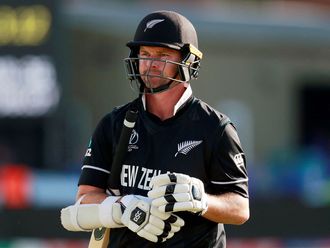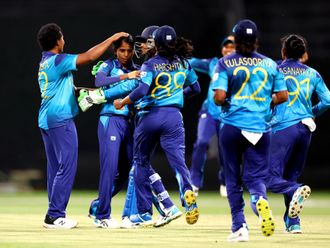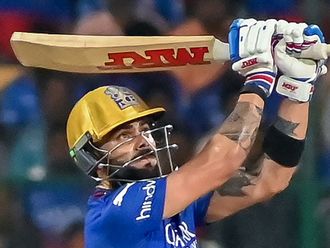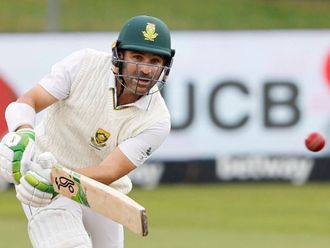
Bengaluru: Ravichandran Ashwin may have won the Man of the match, but the man who masterminded India’s one-run victory over Bangladesh at the M. Chinnaswamy Stadium on Wednesday was skipper Mahendra Singh Dhoni. If not for ‘Captain Cool,’ as he is known, India may not have pulled off that nail-biting win.
Be it in setting the field, pulling off a razor-sharp stumping and finally to sprint with the ball to break the stumps and run out Mustafizur Rahman for the victory, Dhoni was at his inspiring best. He literally guided India to victory and probably into the semi-final as a defeat to Bangladesh with such a low run-rate could have been costly for his team.
Answering to a query on how tough it was to bat on such a wicket and how he planned his moves and used his bowlers, Dhoni explained in depth the thinking behind it: “It was a tough toss to lose. Initially we thought there was moisture in the wicket but in situations like this, at that point of time you don’t know how much moisture is actually present. If you see the Kolkata wicket, they didn’t get enough time to prepare it; but the key was that it stayed the same. The difference between the very first ball bowled and the one bowled in the second innings was that the ball was stopping, especially when it came to spinners.
“When you are bowling slow, you are able to get a bit of purchase to trouble the batsmen. As the game progressed, deliveries from the fast bowlers’ started to come onto the bat slightly better. As a spinner, if you can still flight the ball and hit the seam, you can continue to get a bit of purchase. But the wicket got better to bat on in the second innings, though a lot of credit goes to the Bangladesh batsmen who came in and expressed themselves. If the stake is not too high, often you can see batsmen playing big shots which could be of help to you but they kept cruising and putting pressure on our bowlers.”
One could not but resist asking him how he kept his cool when the match was so tense. “I think what’s important is to listen to everyone. In situations like this, it’s literally chaos, and you are trying to manage chaos. Everyone will have their own opinion; often the opinion of a batsman is very different to that of a bowler. So what you’ve got to do is to see what is the strength of the batsman who is batting at that point of time, how the wicket is behaving, whether there is reverse swing or not... all these things one needs to calculate.”
Many believe that Dhoni takes decisions unilaterally, but he says he does not. “I feel what really helps me is listening to all of them, but at the end of the day you push the bowler to bowl. If I am convinced that this is something that I want to do, then I go ahead and do it. But definitely having an open mind at that time helps, because under pressure one may have a tunnel vision and that’s where different point of views come in handy. But you need to assess everything in a very short span of time.”
Would he consider this as his best performance as a keeper in Twenty20? “I don’t know. If the batsmen does not go out, then I cannot stump him. If the catch doesn’t come, I cannot take it. I even dropped a catch. Overall, it was still a very good effort from the team and I felt that majority of the members had a tough day. ‘Ash’ (Ashwin) had a very good day when it comes to bowling, but there were patches where he went for runs as well. Sure, the bowlers went for a bit of runs but they came back and contributed. Overall it was a very good game for us, especially for youngsters who have not played under a lot of pressure.”












